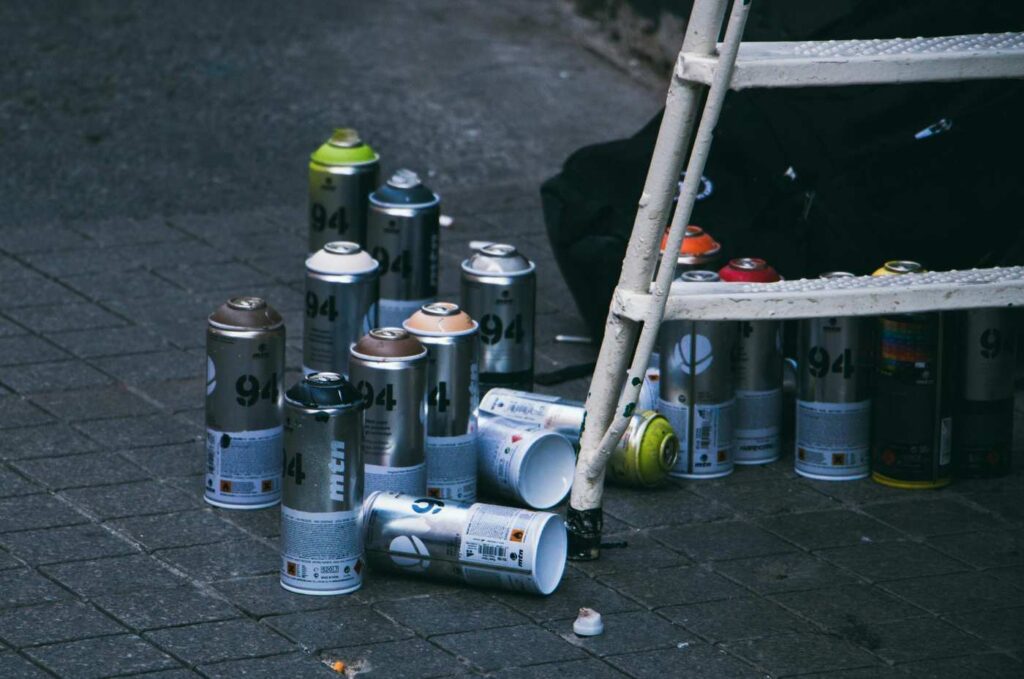This article has been clinically reviewed by Dr. Sean Barlow.
There are common things in our world with names like “fresh linen” or “computer duster” that hide their potential for something a bit darker. In this case, the enemy is not someone at the liquor store or lurking in a dark alley. It’s under your kitchen sink. Or in your garage. It’s the household items people inhale for a momentary high. We are going to cover the street names for inhalants, so you can be a bit more aware of what might be happening under your own roof.
Street Names for Inhalants: Start Here
Inhalants are ordinary household products—paint thinner, glue, computer duster—that, when inhaled, create a few fleeting moments of euphoria. Accessible. Legal. Cheap. Immediate.
These items are so available, it kind of feels safe to someone looking to mess around. But there are deeper issues going on here. Why is someone choosing to use an inhalant? And what’s it doing to their body?
Inhalant Secret Code Words
When people talk about street names for inhalants, they’re talking about the code words passed around at parties or hangouts. Common ones include “whippets,” “poppers,” “dusters,” “huffing.” We will get into those in a minute.
But as you can see, they each are a bit of a description as well as a softener. The names make them feel fun and sage. A way to pretend it’s not as dangerous as it is. It’s almost like calling a gun a boom-stick or a knife a “sticker.” This kind of language normalizes things, as well as helps to hide things in plain sight.
The danger? A big one is when you use one of these inhalants to get a high, you starve your brain of oxygen. Damaging brain cells for a short-lived feeling.

What Inhalants Actually Are
There are four main types of inhalants. As you can imagine, they are all supposed to be useful in our homes and lives. Think cleaners, glues, paints and other items that are a mix of chemicals. The types are:
- volatile solvents (paint thinner, gasoline, glue)
- aerosols (hair spray, spray paint)
- gases (butane, nitrous oxide)
- nitrites (like amyl or butyl nitrite, known as poppers)
Even though they are different, they pretty much all do a similar thing. Trigger a slight dopamine kick and choke off the brain’s oxygen. It’s What happens is the body fights to breathe while the mind leans into the illusion of peace.
The high is brief—seconds or minutes—and that’s the trap.
Because when it fades, you still have your “household drug of choice” in your hand (or plenty of other options). So you take another hit. And another. Each time causing damage.
Why They’re Such a Concern
The issue goes back to accessibility. You don’t need to know a guy who knows a guy. You can get it at Home Depot. Or just grab something that has a pretty strong odor out of the cleaning cabinet. This is why it is definitely an issue with kids. They tend to try inhalants even before they get to alcohol.
For adults, it just looks like something to do because there is such a void at this point, why not try this route?
Because the high is so short, it fools people into thinking it’s no big deal. But one breath can stop a heart. It’s called “sudden sniffing death,” and it doesn’t care whether it’s your first time or your hundredth.
Street Names for Inhalants and What They Mean
To understand the problem, you have to understand the language. The street names can sound almost innocent, but there are a verbal mask for a dangerous habit.
- Whippets / Whip-its – nitrous oxide from whipped cream canisters
- Poppers / Rush / Bolt / Locker Room – nitrites that cause a head rush, room deodorizers or leather cleaners
- Duster / Dust-Off / Air Blast – aerosol propellants in computer cleaners
- Huffing / Bagging – inhaling fumes from a rag or bag
- Gluey / Glue Sniffing – inhaling glue or paint thinner
- Buzz Bomb – mixed aerosol inhalants or nitrous oxide combinations
How to Tell If Someone Might Be Addicted
Inhalant addiction can be tricky. If you are looking for signs that someone is using or is addicted to it, check for chemical stains on clothes or the faint smell of something metallic. When you are talking to them look for things like dizziness, or slurred speech that vanishes as quickly as it comes.
Extra empty cans around, maybe a mouth rash, bags from the hardware store in the trash.
Emotionally, something starts to dim. People grow detached—not romantically, not philosophically, but neurologically.
The pleasure circuits in the brain get rewired; the spark that once connected them to joy, to humor, to others, becomes tangled. It’s not selfishness or weakness—it’s a misfiring nervous system trying to find its way home.
The Path to Treatment and Real Healing
Treatment for inhalant addiction needs to begin gently but with precision. Because these substances affect the brain, the first step tends to be stabilization—making sure the body is safe enough to start healing.
But the real work begins after that, in therapy, in rebuilding the neural pathways that have been damaged or confused.
Our Private-room Treatment Facility
At SolutionPoint in Palm Springs, treatment includes clinical detox, therapy, and medication management when appropriate. But it also includes something more human: compassion and structure.
If someone uses inhalants, they may also deal with anxiety or depression. They may have emotional pain and there is a good chance thery already feel pretty bad about themselves and what they are doing. SolutionPoint treats all of this—because the body and the mind are not two separate things. They rise or fall together.
A Call to Real Help
If you’ve noticed the signs, there’s a place that understands what’s really going on beneath it all. You don’t have to explain it perfectly or have it all figured out. The first step is just saying, I think I need help.
Call SolutionPoint in Palm Springs at 833-773-3869. They’ll meet you where you are—with clear science, warm humanity, and a plan that helps you breathe again in all the ways that matter.




